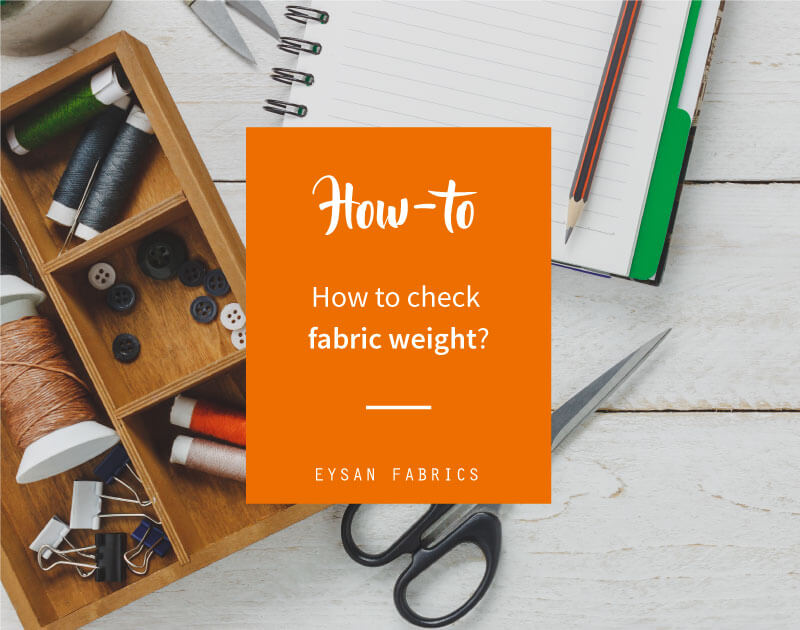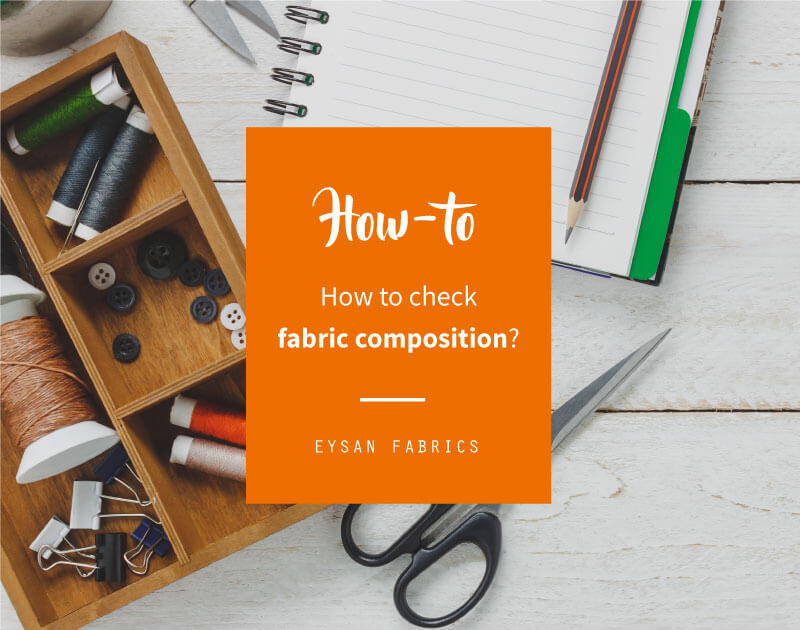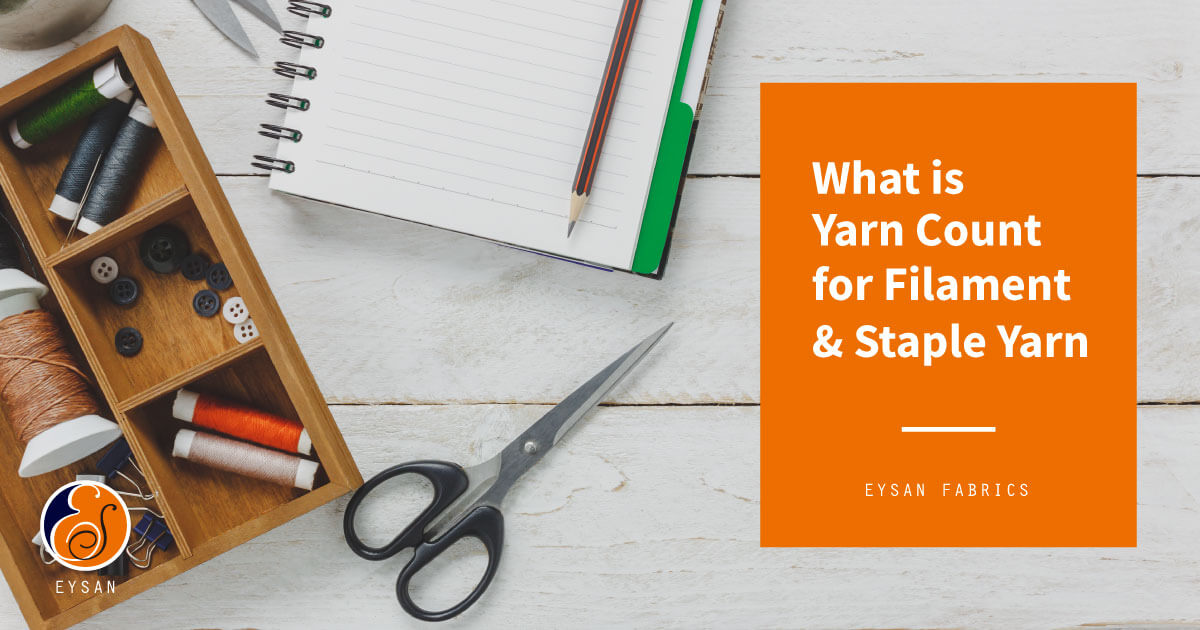
Confused about the difference between filament and staple yarns? Puzzled about yarn count? This article will tell you everything you need to know.
Here we explain all you need to know about staple and filament – the two types of fiber construction we use. And we share the easy formulas you can use to calculate yarn count.
But first, a staple and filament definition…
What is staple yarn?
Staple yarn is yarn formed from staple fibers. These are small fibers that can be measured in cm or inches. With the exception of silk, all natural fibers (such as wool, flax and cotton) are staple fibers.
You can also get manmade staple fibers. Manmade fibers, such as polyester and acrylic, are constructed as filament. However, they can be cut into short length staple fibers. This makes them look and feel much more like natural fibers.
Any staple fiber has to be spun in order to create staple yarn.
Characteristics: Dull, flat appearance. Rough or fuzzy to touch.
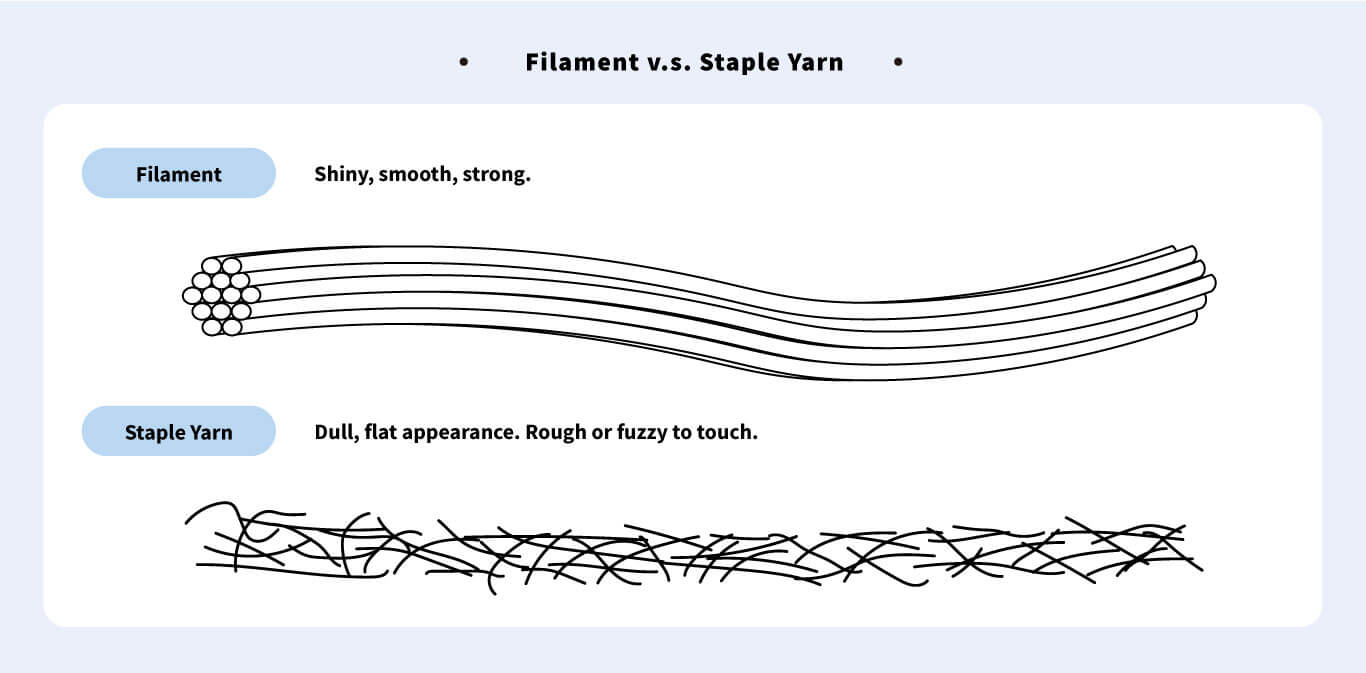
What is filament yarn?
Filament yarn is yarn formed from filament fibers. These are continuous fibers that can be measured in yards or meters.
Filament yarn can be made from manmade fibers. It can also be made from silk, which is reeled from cocoons. Fibers are either twisted or grouped together into a yarn.
Characteristics: Shiny, smooth and strong.
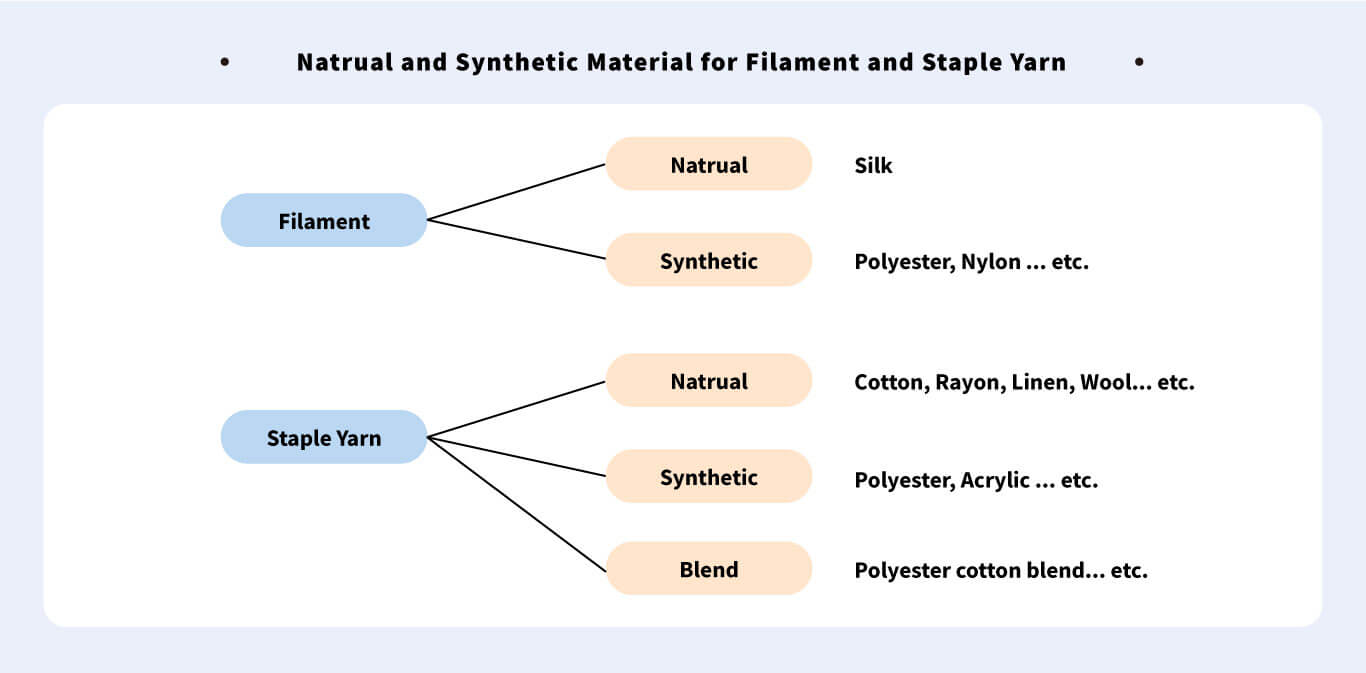
What is yarn count?
Every yarn has its own yarn count. This is a numerical value that tells us how fine or coarse a yarn is. It’s a measure of the weight and thickness of the yarn and, ultimately, the fabric it is used to create.
Staple and filament fibers are measured differently, as we’ll see below.
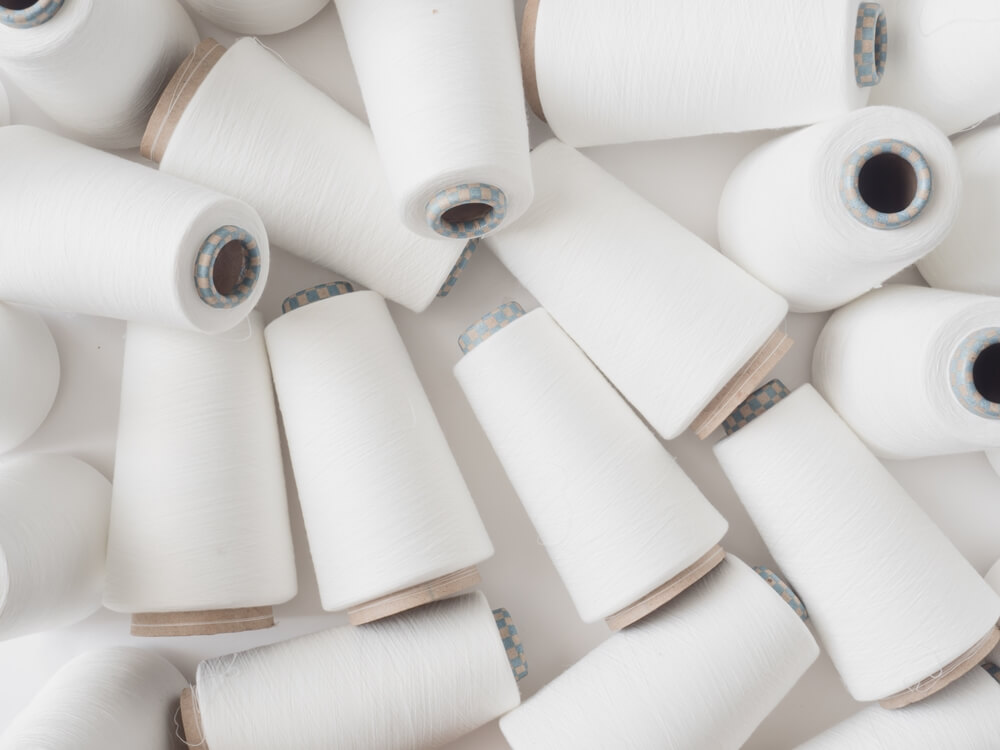
Why do I need to measure yarn count?
Before we get into all of the figures and formulas, you might be wondering why yarn count is so important. Here are just a few reasons why knowing the yarn count is essential to the manufacture and sourcing of fabrics and garments.
Quality
Yarn count can tell you a lot about a yarn’s durability, strength and comfort. It will help you to determine whether a yarn and a fabric are suitable for the purpose you have in mind.
Price
Yarn count affects the price of a fabric. The finer the yarn, the more expensive the product. Yarn count also affects the weight of a fabric, which can again impact a product’s price.
Purchasing
When you understand yarn count, you’ll find it easier to search for the fabric you need. You’ll be better able to communicate with a supplier and check that the fabric you order is to the correct specification.
How to check yarn count for filament yarn?
The yarn count of filament yarn is commonly measured in denier (D). The denier can be calculated using a weight per unit length system, where the fabric weight figure remains a constant. For example:
9000 meters of yarn = 1 gram = 1 denier
9000 meters of yarn = 100 grams = 100 denier
The bigger the denier number, the heavier, thicker and cheaper the yarn will be. The smaller the denier number, the lighter, thinner and more expensive the yarn will be.
In Taiwan, the most common denier specifications for polyester used in garments are 50D, 75D, 100D and 150D.
You may also see a yarn count that looks something like this: 75D/72F. So what does this mean?
Filament yarn is composed of multiple filament fibers. The figure above tells us that the yarn is 75 denier and composed of 72 filament fiber strands.
If the filament number is greater than the denier – for example, polyester 50D/72F – we call this yarn a microfiber.
Beside denier, there is another way to measure filament called Tex, but it is less common.
1000 meters of yarn = 1 gram = 1 tex
How to check yarn count for staple yarn
We can measure the yarn count for staple yarn using a weight per unit length system.
The spinning industry likes to use a process based upon English Cotton Count. This yarn count is determined by the number of yarn hanks (each 840 yards long) equivalent to one pound of yarn.
This method is measured in ne (rather than denier or tex), and it’s commonly written as ‘s. For example “Cotton 20’s”.
840 yards = 1 lb = 1 ne or 1’s
840 yards x 2 = 1680 yards = 1 lb = 2 ne or 2’s
Using this system, the larger the number, the finer the yarn and vice versa.
How do we check yarn count for blended yarn?
We get yarns blended with two or more different materials for all sorts of different reasons; to enhance a fabric’s qualities, to reduce the cost and even to create different dyeing effects.
When it comes to measuring the yarn count of blended yarn, it’s really quite simple. The measurement we use depends upon the form of the fiber.
If the yarn is a staple yarn, we can use ne, ‘s or tex to measure it. If the yarn is a filament yarn, we use denier/filament.
Converting yarn count and denier
We don’t have to convert yarn count to denier (and vice versa) very often. However, when we want to customize fabric from a staple yarn to a filament, the following conversion formula will prove useful:
5315 / denier = yarn count
5315 / yarn count = denier
We hope this information on filament yarn, staple yarn and how to check yarn count has shed some light on a pretty technical topic! If you still have questions or would like to source fabric for your next project, get in touch! We have over 30 years’ experience in the supply of quality knitted fabrics.
Gain more knowledge:

Yarn, Piece or Solution Dyed Fabric?
Which dyeing method should you choose? Is yarn, piece or solution dyed fabric best for your product? Find out the key differences between these fabric dyeing methods.

How to Identify Fabric Fiber Content with a Fabric Burn Test?
Why is identifying fabric fiber content important? What can the fabric burn test tell us? How to identify fabric fiber content by simple fabric burn test?
Want to know more about EYSAN? Or looking for fabric advice?

Eysan Fabrics
Eysan is a knitted fabric expert. Since 1986, it has continually supplied quality fabrics and service to clothing manufacturers and well-known clothing, athletic, and underwear brands. If you have any questions regarding knitted fabrics or have any knitted fabric needs, please feel free to reach out to us.

